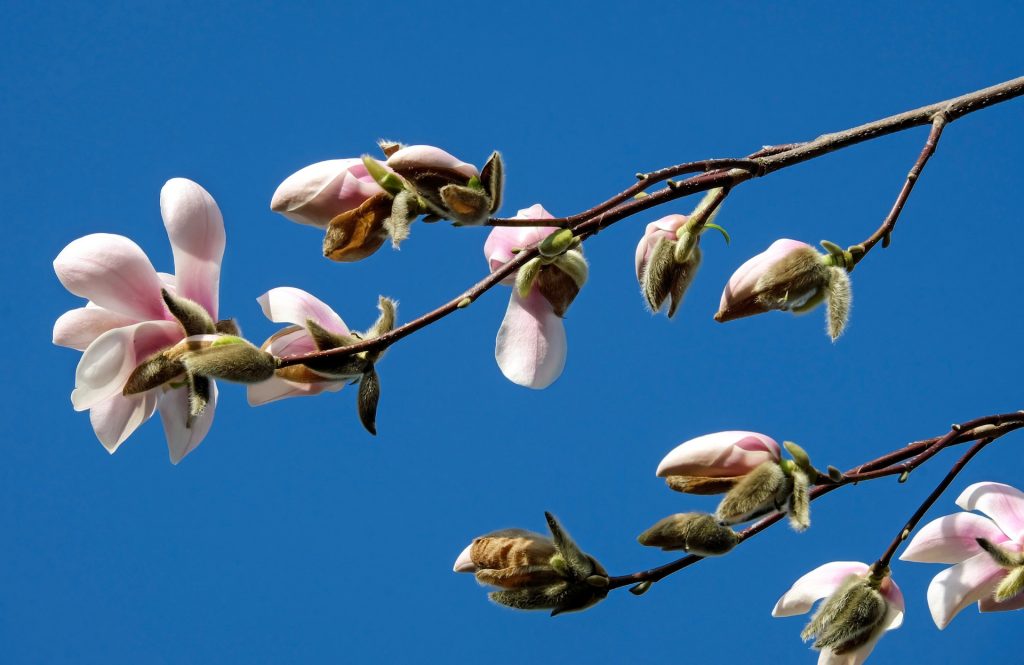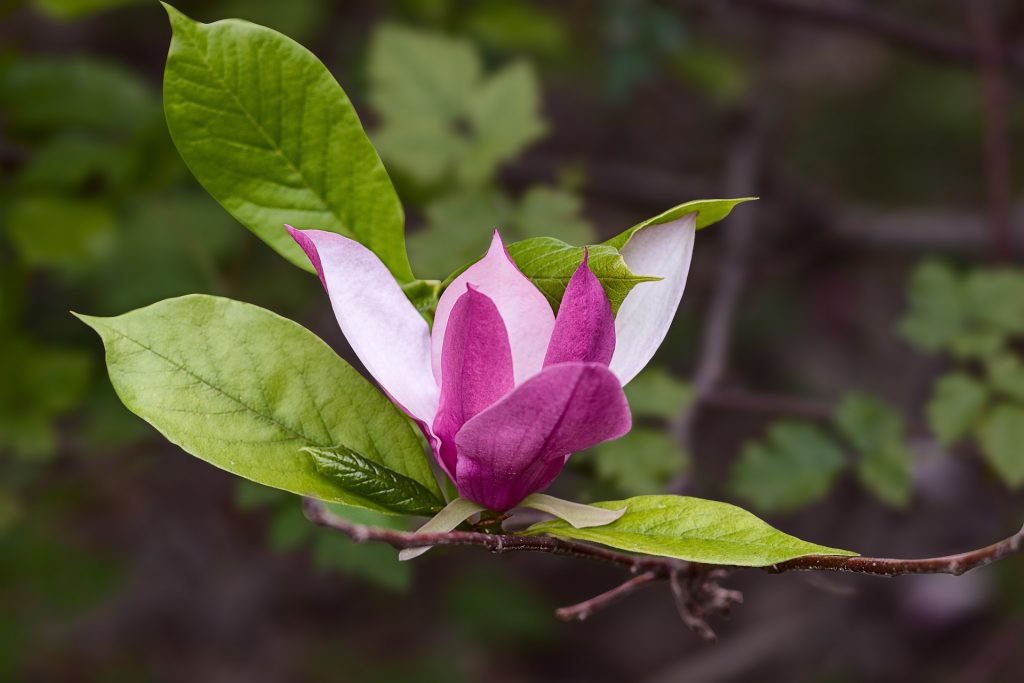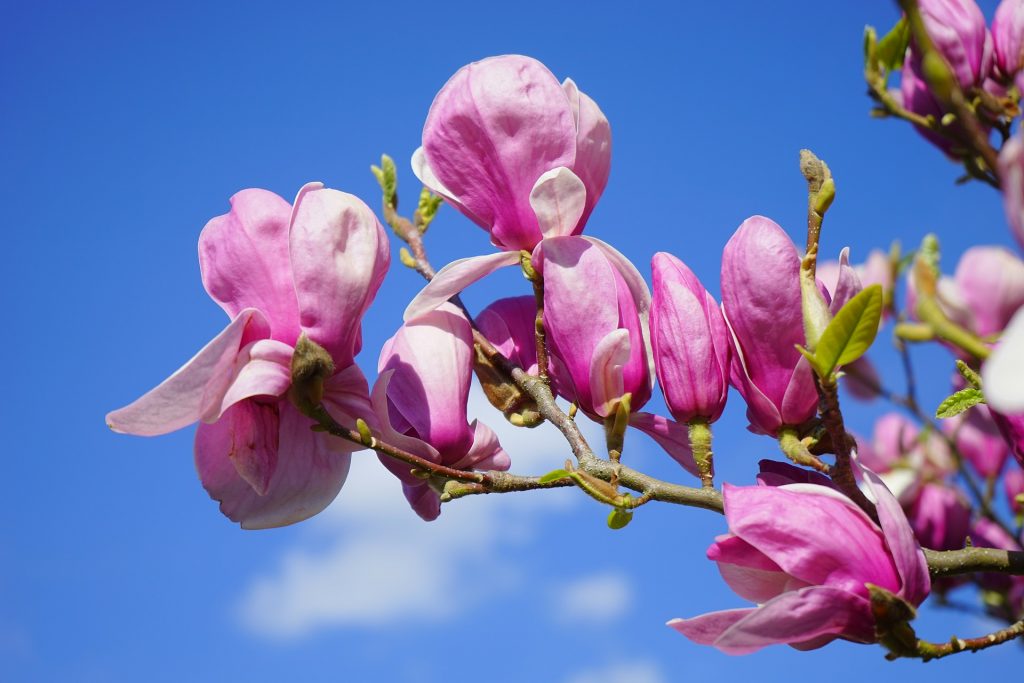 Magnolia (Magnolia spp.) is a genus of flowering plants that belong to the Magnoliaceae (Magnolia) family of plants. Magnolia plants are quite diverse in appearance, but are generally characterised by characteristic large flowers with thick stamens. Certain species of magnolia have become favorites of gardeners for their horticultural beauty. The flowers of many species of magnolia are edible, with the petals of Magnolia grandiflora being used in pickle in England for example, and in Japan Magnolia hypoleuca and Magnolia obovata being used in types of Misu and as a decorative wrap for food, respectively. The bark of magnolia trees is used in Traditional Chinese and Mexican Medicine as a treatment for mood disorders. Magnolia bark is also used in the traditional Japanese medicine Kampo, where it is included in the Saiboku-to and hange-koboku herbal extract mixtures. In this regard, extracts of magnolia bark may be particularly useful in the treatment of anxiety and anxiety related disorders.
Magnolia (Magnolia spp.) is a genus of flowering plants that belong to the Magnoliaceae (Magnolia) family of plants. Magnolia plants are quite diverse in appearance, but are generally characterised by characteristic large flowers with thick stamens. Certain species of magnolia have become favorites of gardeners for their horticultural beauty. The flowers of many species of magnolia are edible, with the petals of Magnolia grandiflora being used in pickle in England for example, and in Japan Magnolia hypoleuca and Magnolia obovata being used in types of Misu and as a decorative wrap for food, respectively. The bark of magnolia trees is used in Traditional Chinese and Mexican Medicine as a treatment for mood disorders. Magnolia bark is also used in the traditional Japanese medicine Kampo, where it is included in the Saiboku-to and hange-koboku herbal extract mixtures. In this regard, extracts of magnolia bark may be particularly useful in the treatment of anxiety and anxiety related disorders.
A number of human studies have investigated the effects of magnolia on mood. For example in one study, a combination of magnolia bark extract (60 mg) with magnesium (50 mg) resulted in significant decreases in anxiety, mood depression, irritability, insomnia and labido loss in post menopausal women. The authors concluded that magnolia and magnesium in combination were effective at positively affecting the mood and sleep of the subjects. In another study, a combination of Magnolia officinalis and Phellodendron amurense (as the proprietary medicine Relora, 250 mg per day), was investigated for its effects on overweight postmenopausal women. The combination of herbs was effective at reducing the transient feelings of anxiety experienced by the subjects. In another study, addition of magnolia bark extract to a combination of soy isoflavones and lactobacilli significantly decreased the irritability, anxiety, depressed mood, and loss of labido experienced by postmenopausal women.

Magnolia bark extract may be a useful treatment for mood disorders, particularly anxiety.
A number of studies have investigated the anxiolytic effects of magnolia extracts in animals. In one study the effects of Magnolia dealbata extracts were investigated in mice, and researchers reported a dose-dependent decrease in anxiety in the animals following exposure to experimental stress conditions. In addition, the administration of the magnolia extracts also increase the sleep time when coadministered with the barbiturate drug pentobarbital. The authors concluded that the results support the contention from traditional medicine that magnolia extracts possess anxiolytic effects. Therefore evidence exists for the effectiveness of whole magnolia extracts as anxiolytic agents in both animals and humans. This supports the large volumes of anecdotal and medical records from Chinese, Japanese and other traditional medicines from around the world as to the beneficial effect of magnolia on mood disorders. Magnolia bark has been the most studied, but other parts of the plant may also be effective.

Magnolia contains the phytochemicals honokiol, 4-O-methylhonokiol, magnolol and obovatol. These lignans, may explain the mood elevating effects of the plant. They may work through activation of the benzodiazepine receptor in the brain, producing a calmative effect.
In another animal study, the effects of magnolia were investigated by administering preparations of 5 plants (Saiboku-to) and 10 plants (hange-koboku) used to treat mood disorders in Japanese traditional medicine. The Saiboku-to preparation contains Magnolia officinalis, whereas the hange-koboku contained Magnolia obovata. The results of the study showed that the anxiety relieving effects of the herbal preparations were due to the presence of the phytochemical honokiol, which is present in the magnolia component of the extract. Those samples of Saiboku-to and hange-koboku that did not contain any magnolia extracts did not have any anxiolytic effects. A number of other phytochemicals have been identified from extracts of magnolia, and some of these have been confirmed as being partly responsible for the anxiolytic effects along with honokiol. For example, 4-O-methylhonokiol, magnolol and obovatol may also contribute to the mood elevating effects of magnolia.
In another study, injections of honokiol into mice conferred similar anxiolytic effects to injections of the benzodiazepine drug diazepam. In this study the activity of the glutamic acid decarboxylase enzyme, an enzyme responsible for synthesising the neurotransmitter GABA, was increased by both honokiol and diazepam. GABA is an inhibitory neurotransmitter, and through increases in its synthesis, it is possible that anxiolytic and sedative effects could be obtained. The anxiolytic effects of 4-O-methylhonokiol have also been investigated. Administration of a single dose of 4-O-methylhonokiol decrease the anxiety experienced by experimental mice. This effects was attenuated with addition of flumazenil, a drug that blocks the benzodiazepine receptor. Therefore it is likely that the anxiolytic effects of 4-O-methylhonokiol occur at least partly through activation of this receptor. Oral administration of obovatol also decrease the anxiety experienced by mice, and this effect is comparable to that of diazepam.

Magnolia plants are edible and as well as being medicines, they are also used for their culinary benefits. Magnolia plants are also popular from a horticultural perspective.
In yet another study, the effects of honokiol were investigated in mice using an experimental model of stress. Administration of honokiol significantly decreased the anxiety experienced by the mice, but caused no significant sedative effects in the mice. Administration of diazepam also decreased anxiety in the mice, but this was accompanied by significant evidence of sedation. Comparison of honokiol with diazepam revealed that the two treatments were similar in their anxiolytic effects. Honokiol, 4-O-methylhonokiol, magnolol and obovatol are classified as lignans, and belong to the polyphenol class of phytochemicals. Evidence suggests that lignans may bind to the benzodiazepine receptor in the brain and this may be how they elicit their beneficial effects on mood. Lignana can also perform antioxidant roles and therefore a general reduction in free radical damage may be another mechanism by which these lignans are beneficial against mood disorders such as anxiety.
Eat Well, Stay Healthy, Protect Yourself
RdB
